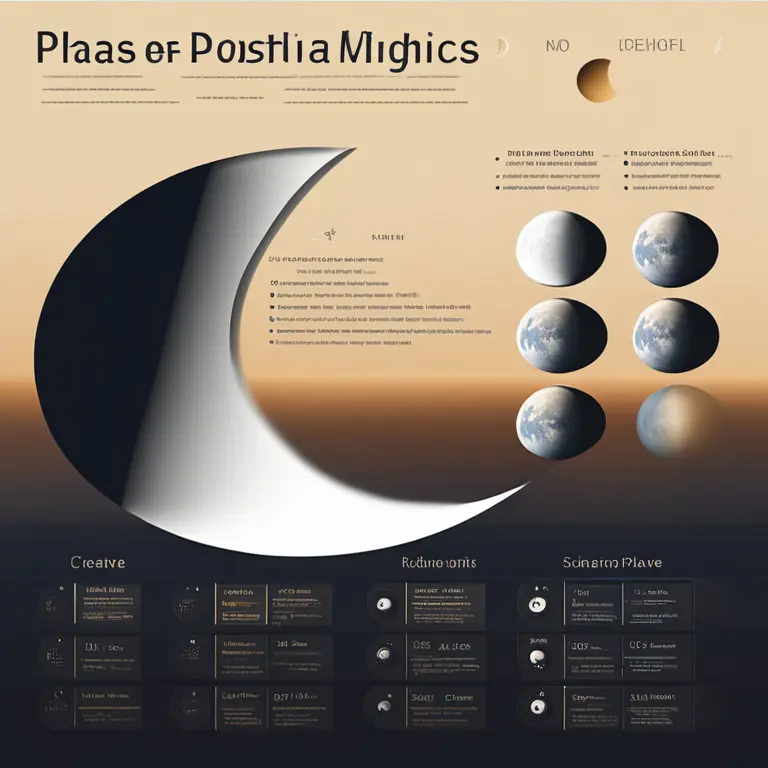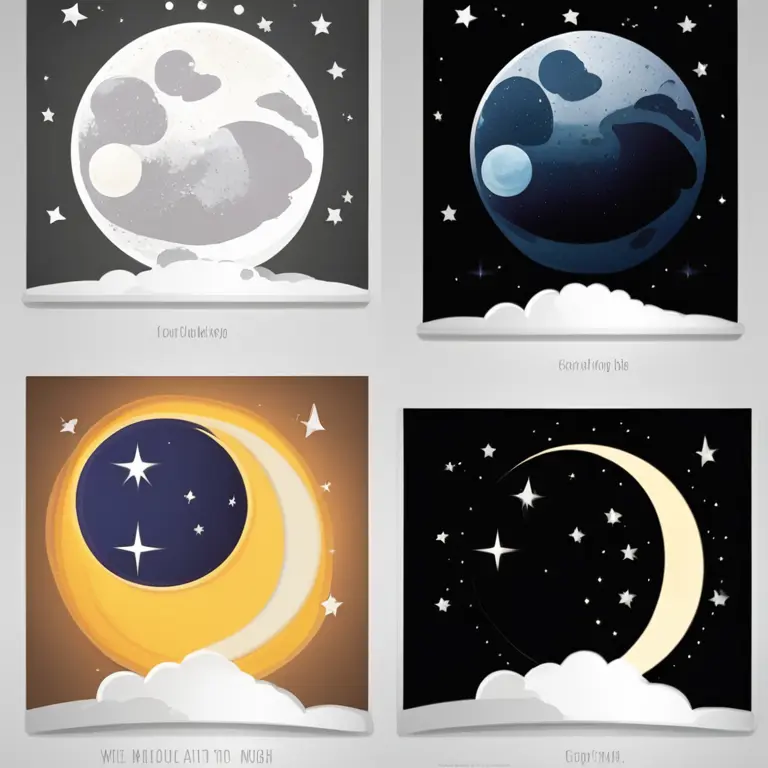
The Mystique of Moon Phases: Celestial Mechanics at Play
Delve into the astronomical phenomena behind the lunar cycle and understand what causes the various phases of the Moon.
article by Priya Deshmukh
The Lunar Cycle Introduction
The Moon's ever-shifting shape has fascinated humanity for eons, serving as a celestial clock and calendar long before modern technology. The cyclical transition from new moon to full moon and back again is a spectacle of natural rhythm and cosmic dance. This enchanting cycle, marked by distinct phases, is a result of the Moon's orbit around Earth and the interplay of light from the Sun. Each phase of the Moon has its own significance in astrology and can influence personal horoscopes, guiding decisions and understanding of one’s self in times to come, especially as we look forward into 2024 and beyond.

Orbital Mechanics and Phases
At the heart of the Moon's phases lies the fundamental concept of orbital mechanics. The Moon orbits Earth in a roughly elliptical path, completing a revolution approximately every 27.3 days. This movement, paired with the Earth's own orbit around the Sun, results in the varied illumination of the Moon that we see from our terrestrial vantage point. The phases unfold in a predictable sequence: new moon, waxing crescent, first quarter, waxing gibbous, full moon, waning gibbous, last quarter, and waning crescent – a cycle that repeats each month without fail.

New Moon to Full Moon: Waxing Wonders
In the waxing phase, the Moon grows in visible area night by night. This begins with the new moon, where the Moon lies between Earth and the Sun, its illuminated side facing away from us. As it continues its orbit, a sliver of reflected sunlight becomes visible on the right edge, signifying the waxing crescent. The first quarter marks the point when half of the Moon is illuminated and visible. Progressing to the waxing gibbous, more than half is lit, leading up to the full moon, where the entire face is aglow, offering a splendid view for all nocturnal beholders and adding a touch of magic to the astrological forecasts for the night.

Full Moon to New Moon: The Waning Phase
After the peak of the full moon, the waning phase commences. The illuminated portion of the Moon starts to decrease from full to waning gibbous. The last quarter phase shows us again a half-lit Moon, but this time the left side is visible. The final waning crescent dwindles until it becomes too slim to see, leading back to the new moon. Astrologically, these phases are associated with reflection, release, and the completion of cycles, themes that will be prominent in horoscopes and mystical guidance, particularly as we move through the transformative years of the mid-2020s.

Astronomical Influences and Astrology
Astrologically, the Moon is associated with emotions, intuition, and the unconscious. Its phases are seen as powerful symbols reflecting personal growth, change, and manifestation. For instance, the new moon is often tied to new beginnings and the setting of intentions, a perfect time for individuals to embark on new ventures or personal goals as they consult the stars for insight. As we venture into 2024, understanding the subtle energies of each lunar phase will become increasingly valuable for those seeking guidance from the celestial realms.
Published: 1/19/2024
Modified: 1/19/2024
More predictions
Come back here soon to learn more about yourself and your future


Can Tarot Cards Forecast Timing Events?
Delving into the potential of tarot cards to predict timing, examining their symbolic language and the challenges in forecasting temporal outcomes.


The Tarot Fool: A Journey of Potential & Beginnings
Delve into the symbolism of The Fool in tarot, revealing insights into new beginnings, potential, and the adventurous spirit of this enigmatic card.


The Tarot Knight of Pentacles: A Symbol of Steadiness
Delve into the symbolism and meaning of the Tarot Knight of Pentacles, a figure representing reliability, dedication, and persistent progress in the Tarot deck.